Betty Wood heads to the Hackney Workshop of Jonty Hampson and Sascha Gravenstein to find out why their products, fashioned from London Plane trees, have a genuine history
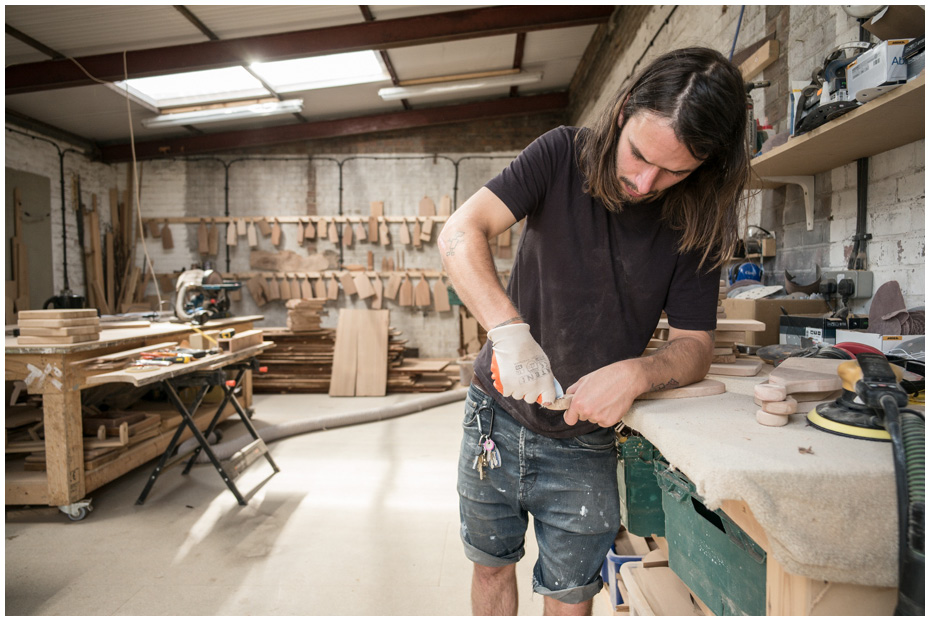
There are few smells so satisfying and nostalgia inducing as that of fresh wood shavings – it’s an honest scent that speaks of labour and inventiveness in equal measure. It’s the smell that greets you as you enter the workshop of Hackney-based product designers Hampson Woods.
As their name suggests, the pair – woodworker Jonty Hampson and artist and designer Sascha Gravenstein – create handworked home wares entirely from wood. I’ve walked past their workshop, hidden behind a corrugated metal wall down a side street near Hackney Central, several times over the past week, completely unaware of its existence. But Hampson Woods is one of many small workshops clustered between Hackney’s busy residential dwellings and retail spaces. And though they’ve been in their current address for four or five years, they tap into an industrious legacy that goes back through the Borough’s history as a centre for production and manufacturing for centuries.The city runs through the veins of Hampson Woods, quite literally: their chopping boards and wooden spoons are made from London plane trees, trees that can be found in almost every square mile of the city and its outlying area.
“The London plane is a hybrid of two, an oriental plane and sycamore, and it was first discovered in Spain about 400 years ago, as a result of these two types of trees being close to each other in parkland”, Jonty explains to me. Quick growing, and effective at dealing with pollution, their broad leaves also offered excellent shade, essential in hot European city centres. “They’ve very resistant to buildings, and very adaptable… It’s not an ancient British tree – there are only 12 or so of them – but we were drawn to the plane because of the way we came across it, and the fact you see them everywhere in London.”
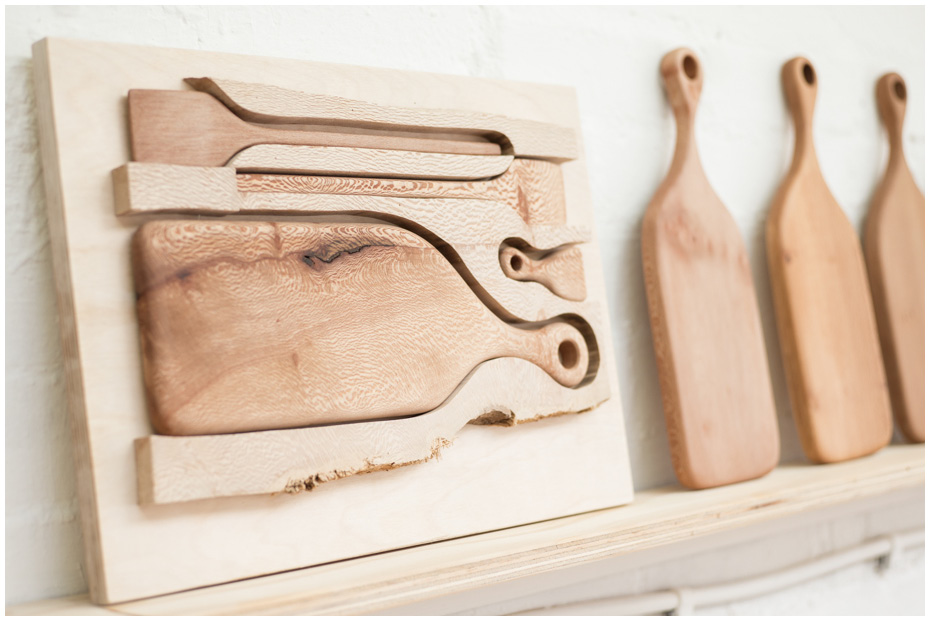
The love affair with London plane – as apt a phrase as any for the relationship and resulting objects they create from the species – began early on in Hampson Wood’s Hackney tenure. Jonty had been working as a carpenter and woodworker in New York for several years, doing restaurant and bar interiors. “When I came back to the UK in 2013, my good friend Sascha, who’d been working in the graphic design industry for various agencies for a decade, wanted to get out – we collaborated on the interior of a photographic studio in Dalston, and the E5 Bakehouse in London Fields.”
For E5, part of their design included a splashback on the counter made from natural timber. “We saw this arborist, and he had wood that was left from a tree that had come down in Russell Square”. The tree, a London plane, was also used to fashion boards for the bakery to display their patisseries. “We realised it was a lovely thing, so got more and more wood from this specific tree – a single tree yields a lot of boards, as you can imagine, so we kept going back to him until he’d run out of the Russell Square timber.
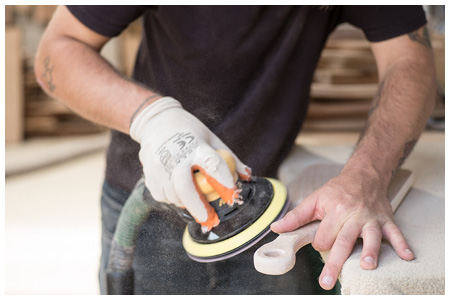
“This was about the time that demand for was growing as well, so we spent probably three or four months looking around Britain, trying to find suppliers that had a similar story to this guy in that a tree had to come down, and where they had a close relationship with estate managers.” Natural recycling – though not the easiest to source or the readiest available timber – as a story adds charm to the chopping boards, as does the material itself: “There’s not been a lot of use for it in recent years, ” Jonty adds. “It was used a lot about 50 years ago for veneers, for small jewellery boxes and mirror frames. And it’s that reason as well that it wasn’t used for the last generation, as people wanted something more uniform, not quite as decorative.”
“It’s very rare that a board hasn’t touched two of three people’s hands”
“Hampson Woods is one of many small workshops clustered between Hackney’s busy residential dwellings and retail spaces”
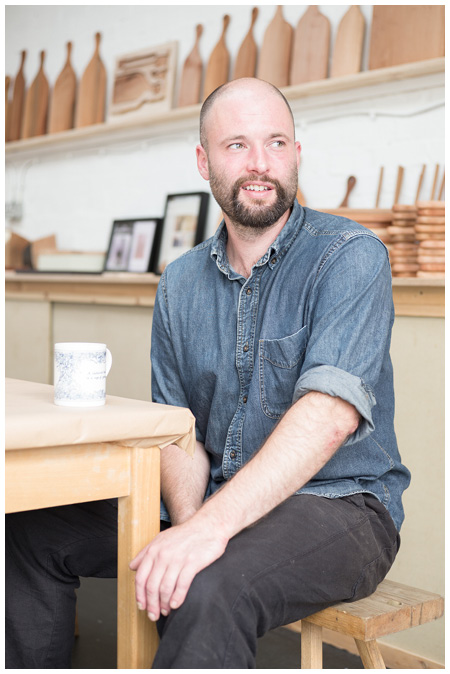
The charm of the wood (its inherent variation) means it can also be inconsistent, therefore is unsuitable for larger pieces, like tabletops. Scanning the chopping boards hanging in the studio, which come from the same tree, the colour variation reads like an organic Pantone colour chart, with everything from light blonde to rich ruby represented.
Each board also passes through at least two out of three pairs of hands at the company too: “There’s me and Sacha who own the company, and Asha joined us last year. We split various roles in the business between us, but we still source, design and make everything, and it’s very rare that a board hasn’t touched two of three people’s hands”.
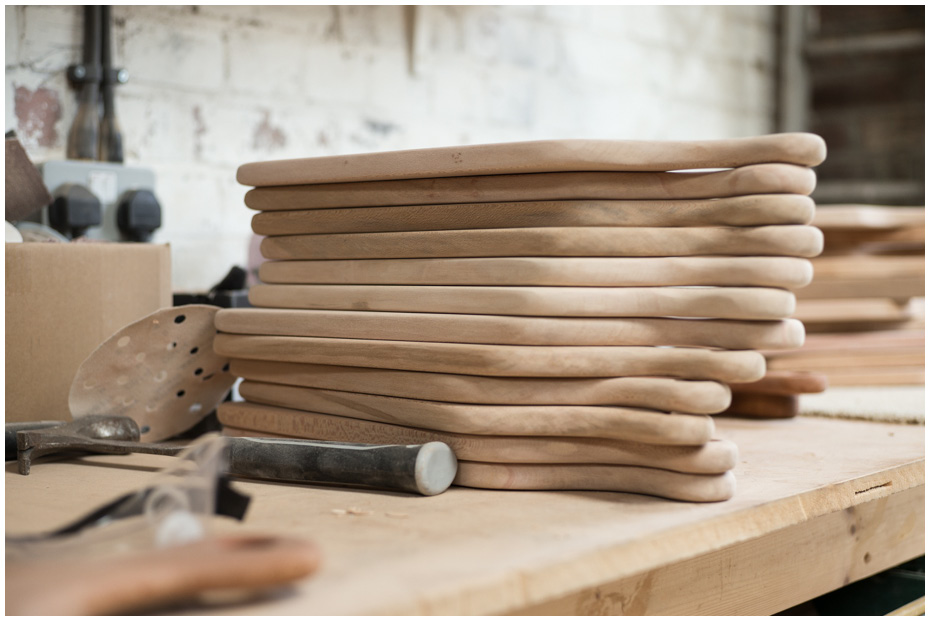
It’s the chopping board that they’ve focused their business on. “We came up with them in 2012, and they were taken on quite quickly by SCP. We’ve been constantly working on other products, but for two years it’s been the boards as they’ve gone down very well.” With an eye on waste, their spoons are created from the off-cuts from making the boards: “Sasha had been on a trip to Skye and had used a porridge spurtle up there – it inspired him and you can see that when you cut the board out, you’re left with something that resembles a porridge spoon”.
And it’s as simple as that: a board, a spoon, and a woodworking empire in the making. “The normal business model is to build up to a certain level of brand awareness and success and outsource, shift production somewhere cheaper, but because we’ve built everything from nothing, with basically our wits and labour and no starting capital, we’ve built this very patient approach to getting where we are now.”It’s tempting to carry on completely on the board”, Jonty continues, “because they are so popular. There’s a huge amount of work in them, and there’s no replacing the hand’s involvement – you can’t mechanise this product, which is a big part of its success – but it isn’t massively profitable. We are looking to develop a few other products, other than the spoons and coat racks, we’re looking to do a few other home ware based products and expand that way.”
“We’ve talked about localised collaborations with other workshops if numbers do grow,” Jonty adds, “to work out a network of rural workshops.” Now, wouldn’t that be nice.
Photography Robin Sinha




